Small and spry, Willow Tits are a welcome sight in the woods and wetlands of Europe.
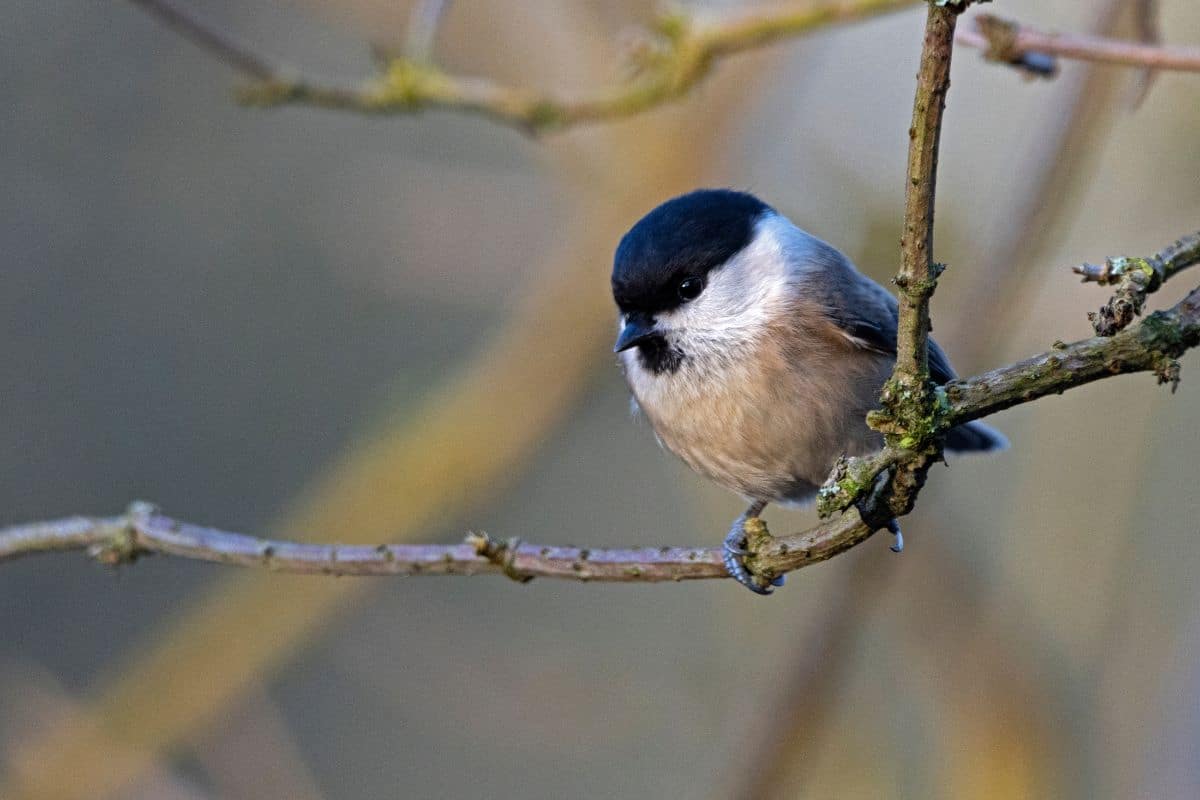
With their muted colors and chirpy calls, these little birds used to be a common sight, but a loss of habitat is threatening their existence throughout the United Kingdom.
Contents
Quick Facts
| Scientific Name: | Poecile Montanus |
| Other Names: | Willow Tit |
| Family: | Tits |
| Conservation Status: | Red in the United Kingdom |
| Length: | 4.5″ 11.5 cm |
| Wingspan: | 6.7″-7.5″ 17-19 cm |
| Weight: | 8-14g |
| Average Lifespan | Three years |
| When to See | All year round |
| Where to See | Damp woodlands and marshes in Europe |
What Does a Willow Tit Look Like
Willow Tits are small, stubby birds with brownish-black caps and bright white cheeks. The black cap reaches down the back of the neck and matches the bird’s smaller, rather ill-defined black bib.
The top portion of each Willow Tit is light brown, while their undersides are a pale beige-tinted gray.
In addition, their wings appear to have distinctive, light-colored patches when closed due to grayish edging on the edgings of their secondary feathers.
A Willow Tit’s tail is graduated rather than square and average in length.
How To Tell the Difference Between Marsh and Willow Tits
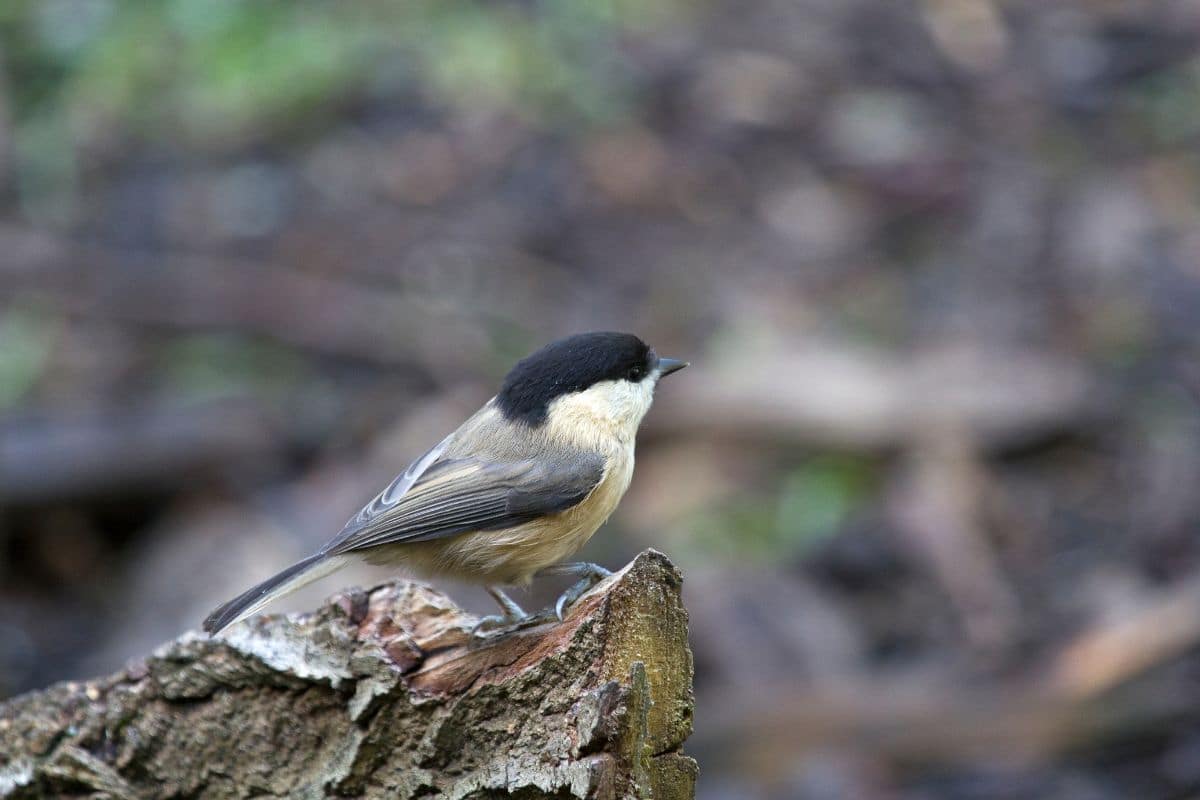
If you’re familiar with the Tit family, you might think Willow Tits seem quite similar to their Marsh counterparts, and you’d be right.
Until 1897, researchers believed that Marsh and Willow Tits were one and the same. Suffice it to say it can be very tricky to tell these two cousins apart.
Marsh and Willow Tits share the same habitats and look very similar at first. On closer inspection, though, Willow Tits are a little paler in coloring, especially along their cap.
Marsh Tit caps are glossy black and can have a deep blue tinge. They also do not have the distinct pale patches on their wings, caused by the gray edging on the Willow Tit’s secondaries.
Their calls also sound significantly different. Marsh Tits make a “pitchoo” sound, while Willow Tits make a “zee-zee.” Often, their calls are the most consistent way for birdwatchers to tell them apart.
How Long Does a Willow Tit Live For?
A typical lifespan for a Willow Tit is three years. By the age of one, they will reach maturity and can begin breeding. That said, the longest recorded lifespan for a Willow Tit is far longer at over ten years old.
What Does a Willow Tit Eat
Willow Tits prefer to eat insects and larvae when they can find them.
Like many other small birds, they are independent scavengers that seek their food from the ground or nearby shrubbery, where insects are plentiful.
That said, Willow Tits will dine on seeds and certain berries when they find them. It’s not uncommon to see them plucking berries from thickets or even snacking on seeds from container feeders.
Still, they usually only utilize feeders or feast from berry bushes when other food sources are scarce, such as during winter.
Unlike other bird types, they probably won’t be habitual visitors to your backyard feeder.
Willow Tit Behavior
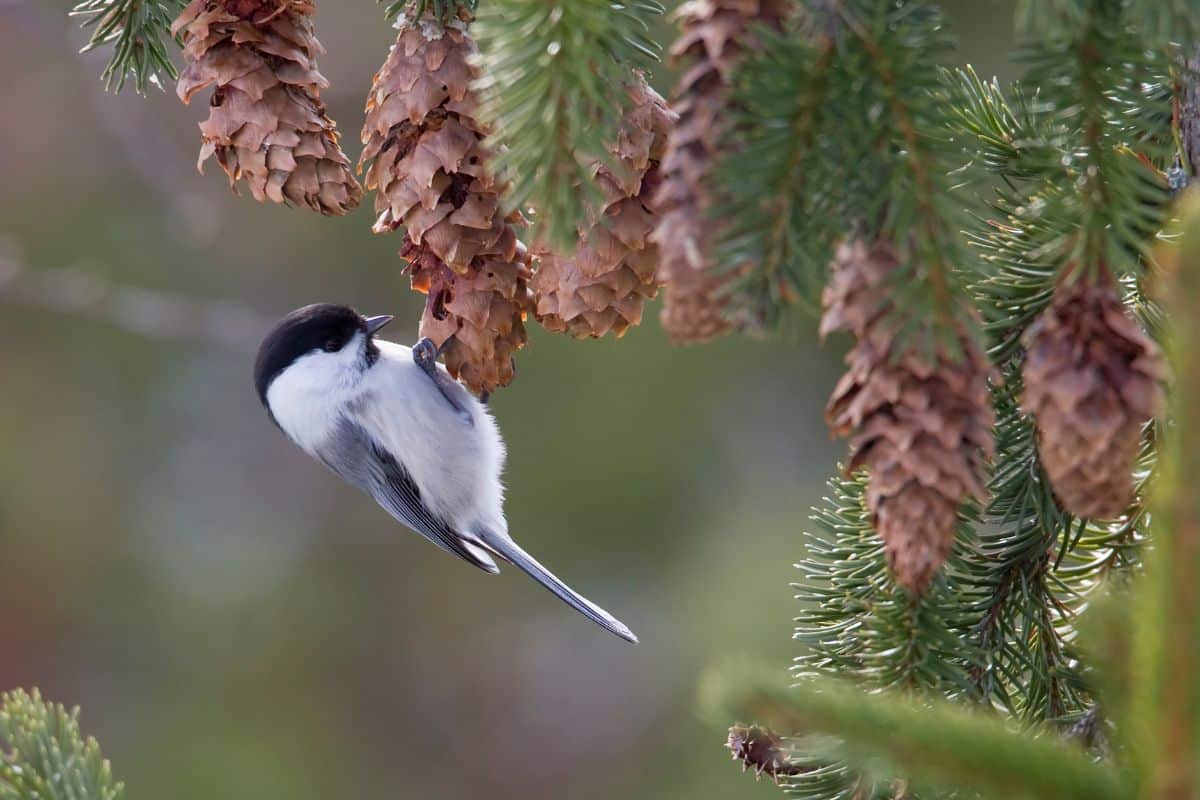
Like many small birds, Willow Tits tend to live in pairs. Rarely, you may see them in groups of three or more, at which point you can say you saw a banditry!
When they pair up to breed and build their nests, you’ll notice woodpecker-like behavior. These cheeky little birds will use their small, pointed beaks to pound holes into decaying trees.
They especially like birch and willow trees, which are prevalent in their typical habitat.
After creating a hole, Willow Tits will use the resulting wood chips, along with bits of fur and hair, to build a nest. There, the female will lay between six and eight eggs. Each egg is pale white with rust-colored speckles.
Sometimes, Willow Tits skip the work of nest building and inhabit a manufactured bird box. So, if you happen to catch sight of a Willow Tit or two in your general area, you might consider putting a birdhouse up for them.
Do Willow Tits Migrate?
No, Willow Tits do not migrate. Instead, they ride out the winter months in their wetland homes.
What Does a Willow Tit Sound Like?
Willow tits have a distinct call that’s a bit nasally in tone and often sounds like a “zee-zee.”
Where To Observe Willow Tits?
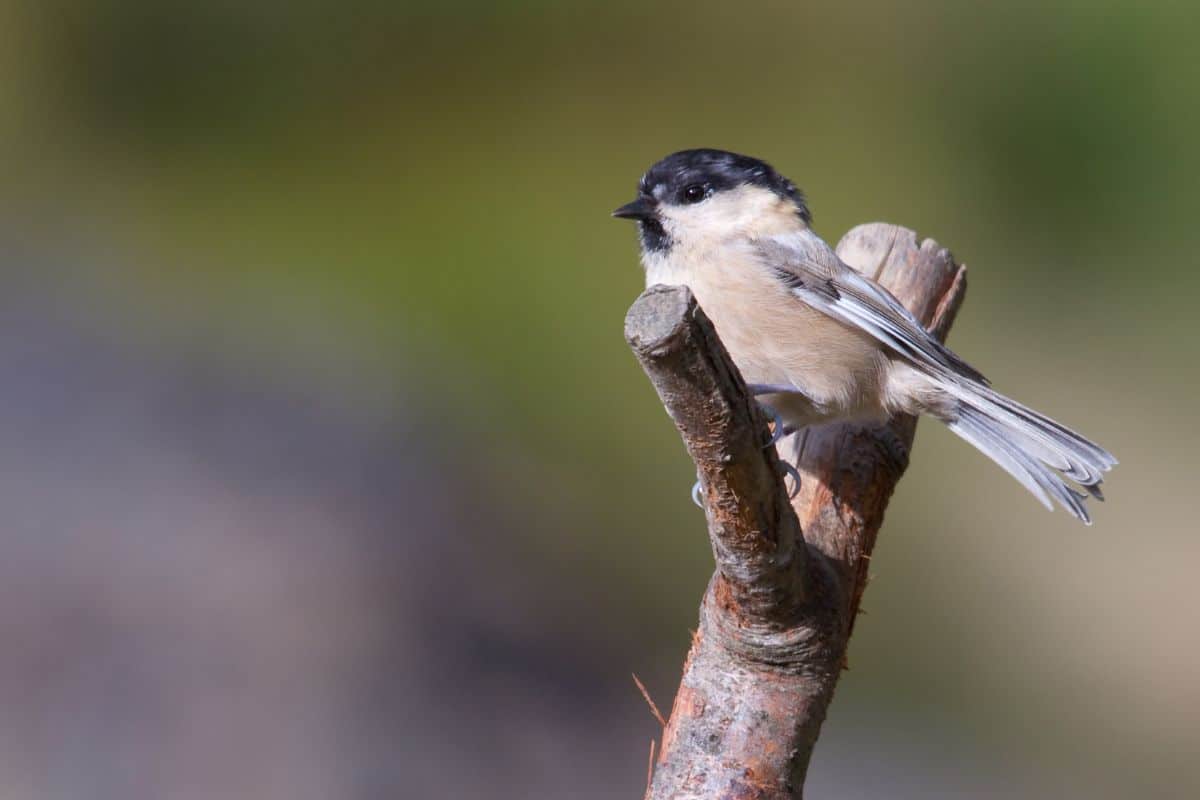
There are several subspecies of Willow Tit distributed across Europe.
Willow Tits live in damp woodlands and marshes in England, Wales, and parts of Southern Scotland. If you come upon a willow thicket, you may be lucky enough to find one.
They also inhabit peat bogs and other lowland spaces. Sometimes, you can observe Willow Tits in gravel pits and post-industrial sites.
Unlike other members of the Tit family, Willow Tits aren’t much for suburban life. So you probably won’t see them in busy neighborhoods or parks.
Instead, you’ll need to venture a little deeper into the woods to find them.
Willow Tit Conservation Efforts
Willow Tits are under serious threat in their British homeland. In fact, they gained a conservation red status in 2002 due to a sharp decline in population numbers. Much of that has to do with a loss of habitat.
Researchers at the Royal Society for the Protection of Birds (RSPB) note that much of the Willow Tit’s decline comes down to three factors:
- A growing deer population
- Drying out of soils
- Increasing number of homes, roads, and railways
Deer eat the dense thickets and other brush that Willow Tits like to frequent.
Soil changes due to climate change make it hard for the trees and wetlands Willow Tits need to flourish. Meanwhile, humans have been clearing forests to make way for homes, roads, and railways.
Despite their rapid decline, Willow Tits are listed as “of least concern” globally. That’s because their population is still quite large despite the drastic loss of the species in Britain.
In all of Europe, researchers estimate there are approximately 18.8 million pairs of Willow Tits.
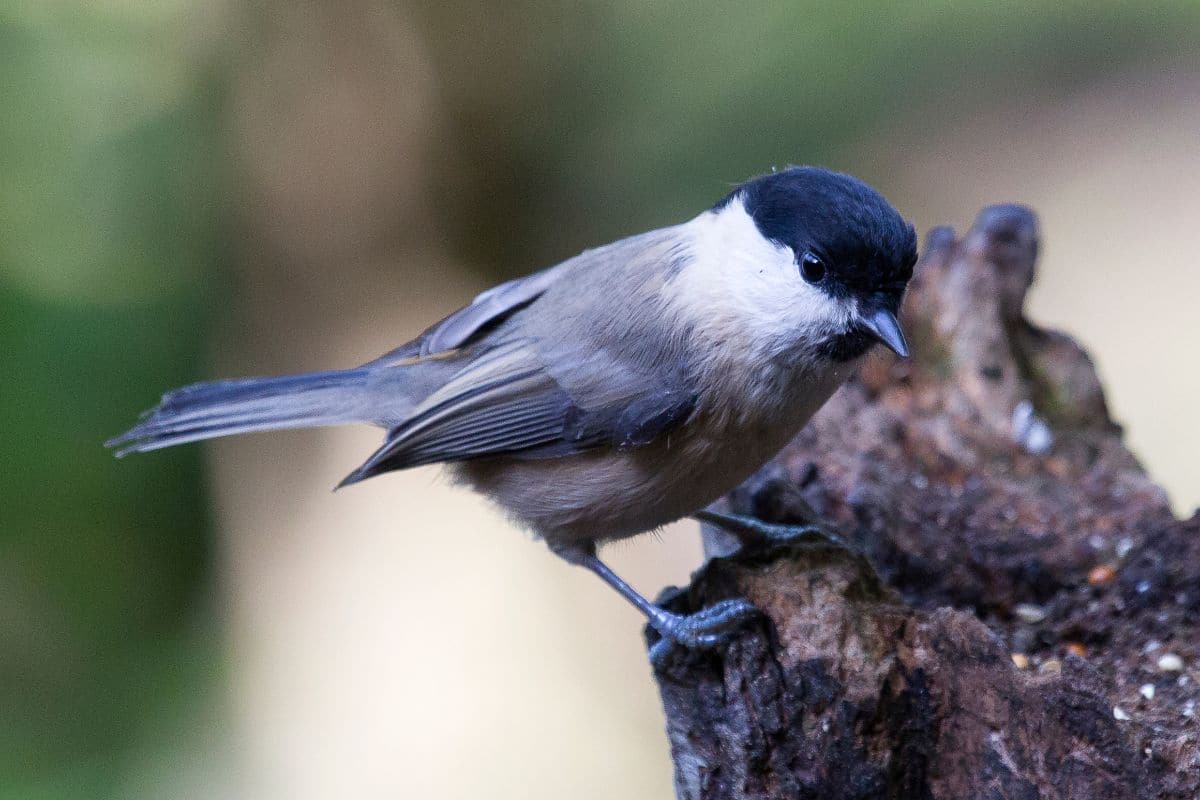
Within the UK, the Wildlife and Countryside Conservation Act of 1981 protects Willow Tits, making it against the law to intentionally harm them, their eggs, or their nesting sites.
The penalty for doing so may include a fine or up to six months of prison.

What is the difference of the black capped chickadee?